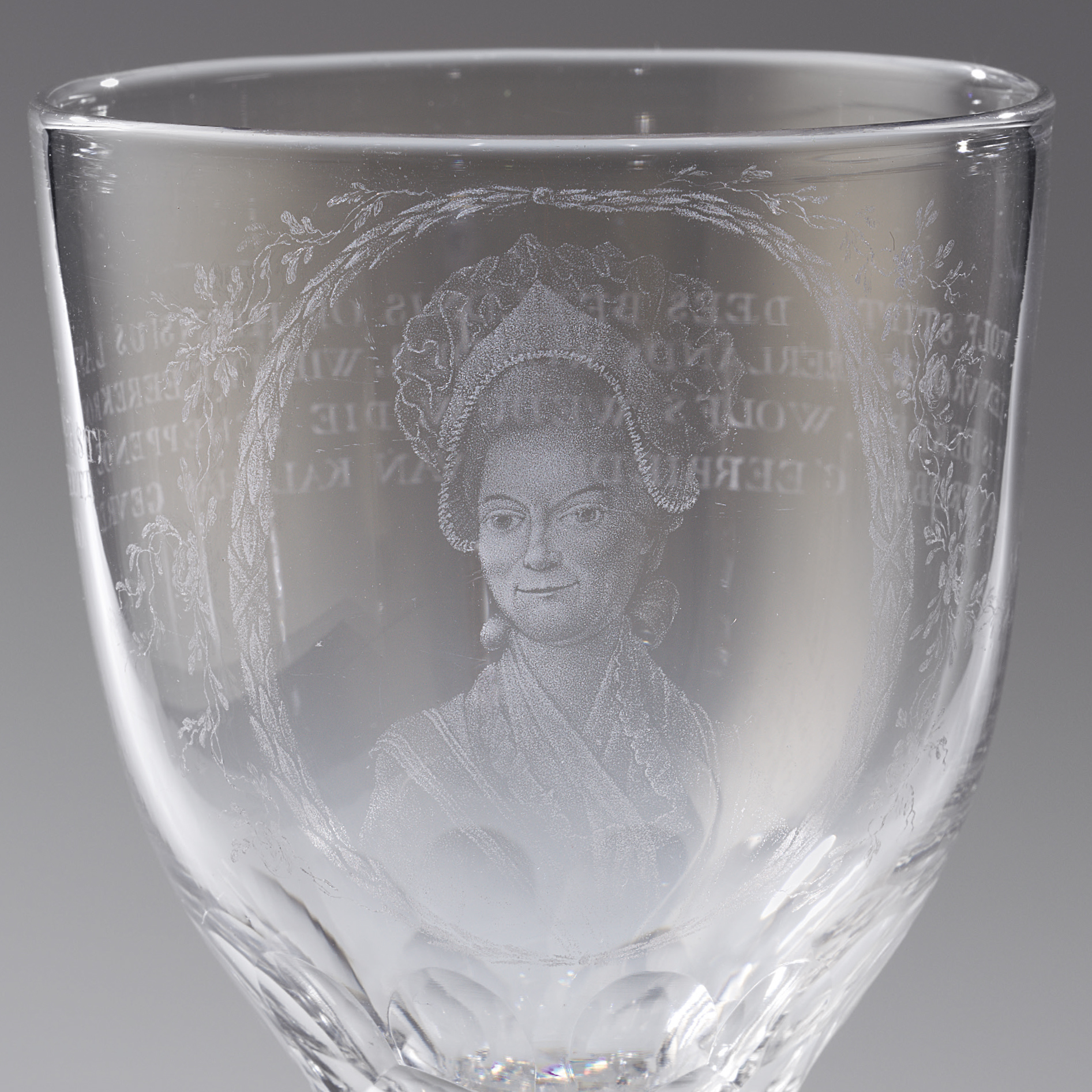A Toast to ‘Neerlands Wonder’:
Elisabeth Wolff-Bekker’s Portrait Stipple-Engraved on Glass
DOI:
https://doi.org/10.52476/trb.19305Abstract
Most eighteenth-century glass goblets with stippled-engraved decorations were used during the Patriot struggle to toast their political leaders. In 2020, the Rijksmuseum acquired an exceptional glass with the stipple-engraved portrait of the renowned Dutch author Elisabeth Wolff-Bekker. Research into the glass’s provenance revealed it was formerly in the possession of Christiaan Nissen and his wife, Magdalena Greeger, a couple with whom Wolff-Bekker shared a close bond. This friendship endured up until Nissen caused the author’s financial downfall in 1791. An inscription on the glass names the engraver who decorated it, David Wolff, and the person who commissioned it, likely Pieter Heijnsius, a wealthy master carpenter and stalwart Patriot from The Hague. Pieter’s daughter, Maria Heijnsius, was married to Isaac van Cleef, Wolff-Bekker’s publisher. As the publicist of Wolff-Bekker’s work, Van Cleef also commissioned the portrait print of Wolff-Bekker that served as the model for the portrait on the glass. Heijnsius and his son-in-law were good friends and both were members of the same Patriot society. Van Cleef was a central figure in Wolff-Bekker’s circle of enlightened admirers. The inscription on the glass also provides insight into Wolff-Bekker’s reputation. It is true that Wolff-Bekker was a supporter of the Patriot movement, but the latter part of the inscription necessitates a more nuanced interpretation of a toast made with this glass. Wolff-Bekker’s admirers were drawn by her literary talent as ‘Neerlands wonder’, but even more so by her opposition to the Calchas figures of her day: the hypocritical ministers set on deceiving and inciting the people. This reflects Wolff-Bekker’s reputation as a defender of virtue and combatant of hypocrites arising from her polemical writings published in the seventeen-seventies and later.
Downloads







